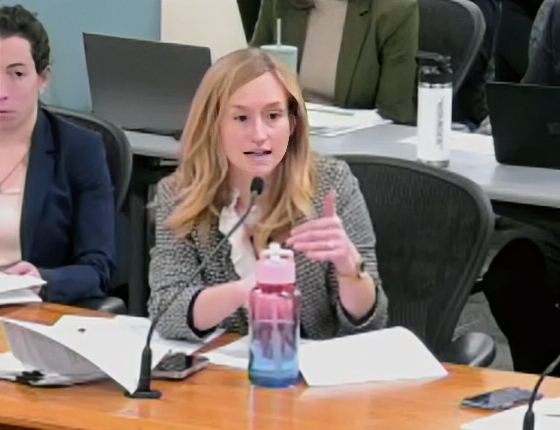During a public hearing last Thursday, February 22, that lasted nearly six hours, the Minnesota Public Utilities Commission (MPUC) decided on key requirements for Minnesota’s new natural gas integrated resource planning process. As the Commissioners navigated the complex task of establishing a framework for gas resource planning, a new process in Minnesota, they turned to expert testimony from various stakeholders, including CEE’s Director of Policy, Audrey Partridge.
Leading to the hearing, CEE worked closely and collaboratively with the Minnesota Department of Commerce, LIUNA Minnesota and North Dakota, and Xcel Energy to develop and submit a joint proposal of preferred outcomes. This group drew from our shared expertise in the gas system, as well as our collective goal to create a pragmatic, productive planning process that balanced safety, reliability, affordability, and environmental, climate, and economic impacts. The Commissioners accepted nearly all of the joint filers’ recommendations in their final order. The following are crucial components of the final decision that will ensure the planning process is functional, accessible, and will benefit the public interest, including advancing our state’s environmental and climate goals.
- Planning Objective: The overarching objective of gas resource planning was defined as determining the best combination of energy resources that will simultaneously protect ratepayers and public interests, advance state policy, and provide reliability, safety, and affordability.
- Energy Efficiency: The Commission will prioritize the inclusion of cost-effective energy savings as a preferred energy resource when evaluating proposed plans, centering energy efficiency in the planning process. The utilities’ energy efficiency targets will also be incorporated into the utilities’ respective Energy Conservation and Optimization (ECO) and Natural Gas Innovation Act (NGIA) plans. The already established ECO and NGIA processes will complement gas resource planning by providing pathways for reaching desired levels of energy efficiency.
- Environmental Considerations: The utilities must estimate the environmental externality costs of each resource option and their overall plans. This means that each resource’s impact on the environment and climate will be factored into the decision-making process.
- Public Participation: Throughout the planning process, there will be public meetings where any Minnesotan can comment verbally on the proposed plans. Special care will be taken to ensure meetings are accessible for communities that are typically underrepresented in regulatory and political processes. Additionally, parties and individuals can submit their own, alternative resource plans if they do not support the one proposed by the utility.
- Impact of Electrification: The utilities must evaluate how increasing electrification will reduce the demand for gas over time and incorporate this change into their plans. The decision also calls for a future stakeholder process and comment period that will investigate whether rate changes will be necessary to maintain affordable, equitable service.
- Oversight and Accountability: Each utility’s resource plan will consist of both a ten-year forecast of sales and emissions and a five-year action plan outlining specific implementation steps. Once plans are submitted by the utilities, the PUC will have the authority to either approve, reject, or modify them. The utilities must submit annual progress updates on the implementation of their most recently approved plan and seek approval from the MPUC if they anticipate deviating from it.
- Expansion Alternatives: When considering strategies for meeting growing capacity needs in the future, utilities must consider alternatives beyond simply expanding the gas system. Rather than assuming that expanding the gas system is the best option, they must explore other options, such as targeted energy efficiency and electrification, a district energy system, or new pipes carrying low-emissions gaseous fuels like hydrogen and renewable natural gas.
The MPUC decided to require a gas resource planning process in Minnesota after Winter Storm Uri, which caused gas prices to spike dramatically in 2021 and demonstrated the need for increased utility planning. Once a regulatory framework is fully established, the resource planning process will require Minnesota’s three largest gas utilities (Xcel Energy, CenterPoint Energy, and Minnesota Energy Resources Corporation) to periodically submit integrated resource plans to the Commission. By requiring more transparent, forward-looking, and long-term decision-making, gas resource planning will prepare Minnesota’s utilities for a transition to a decarbonized future while protecting consumers from price volatility. It will provide the regulatory process and path for our gas utilities to advance our state’s climate goals, with guidance and oversight by the MPUC, which has proved a highly successful approach in Minnesota’s electric sector.
While the MPUC made considerable progress on Thursday, they still have important details to work out regarding the implementation details of gas resource planning. Public involvement in future regulatory stages will be crucial to ensure that the gas planning framework results in a truly reliable, affordable, and decarbonized system. To keep up to date with the regulatory process and participate in the next round of public comments, you can find more information here.
